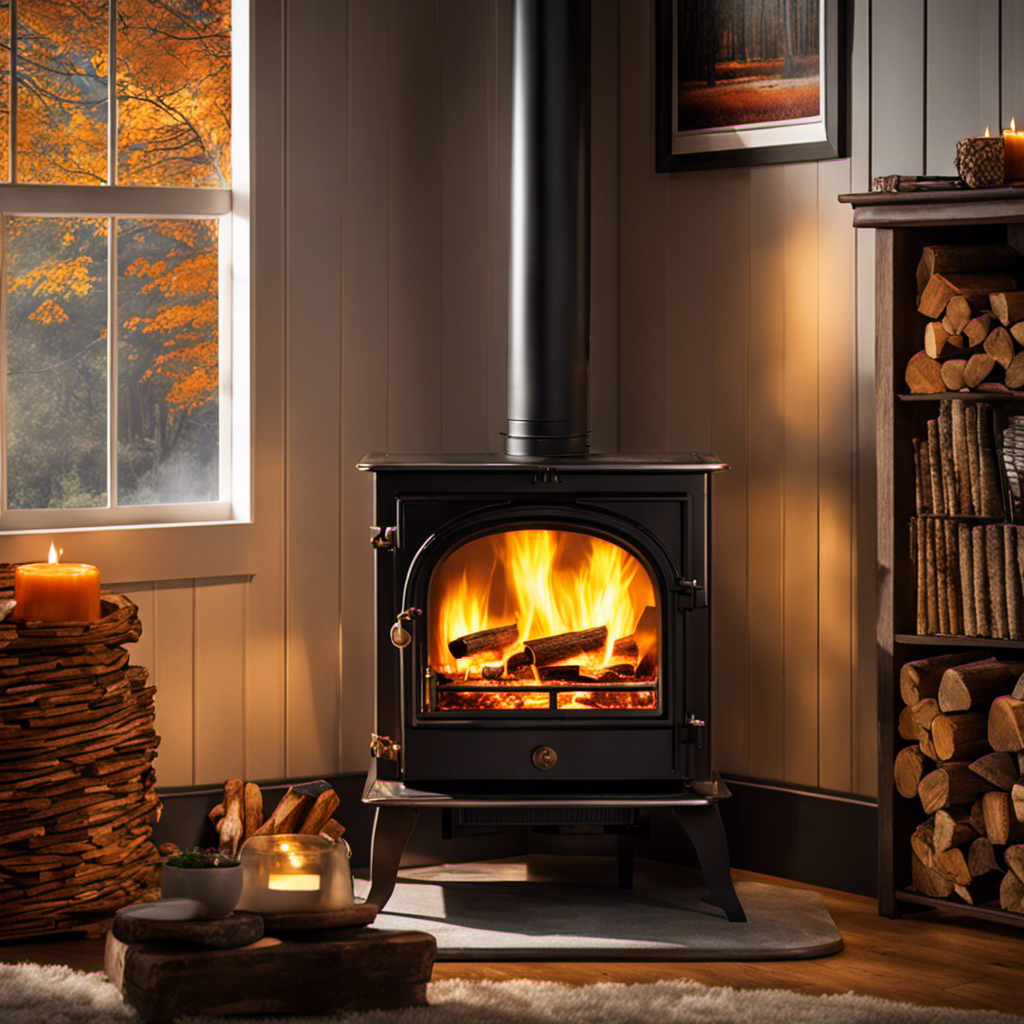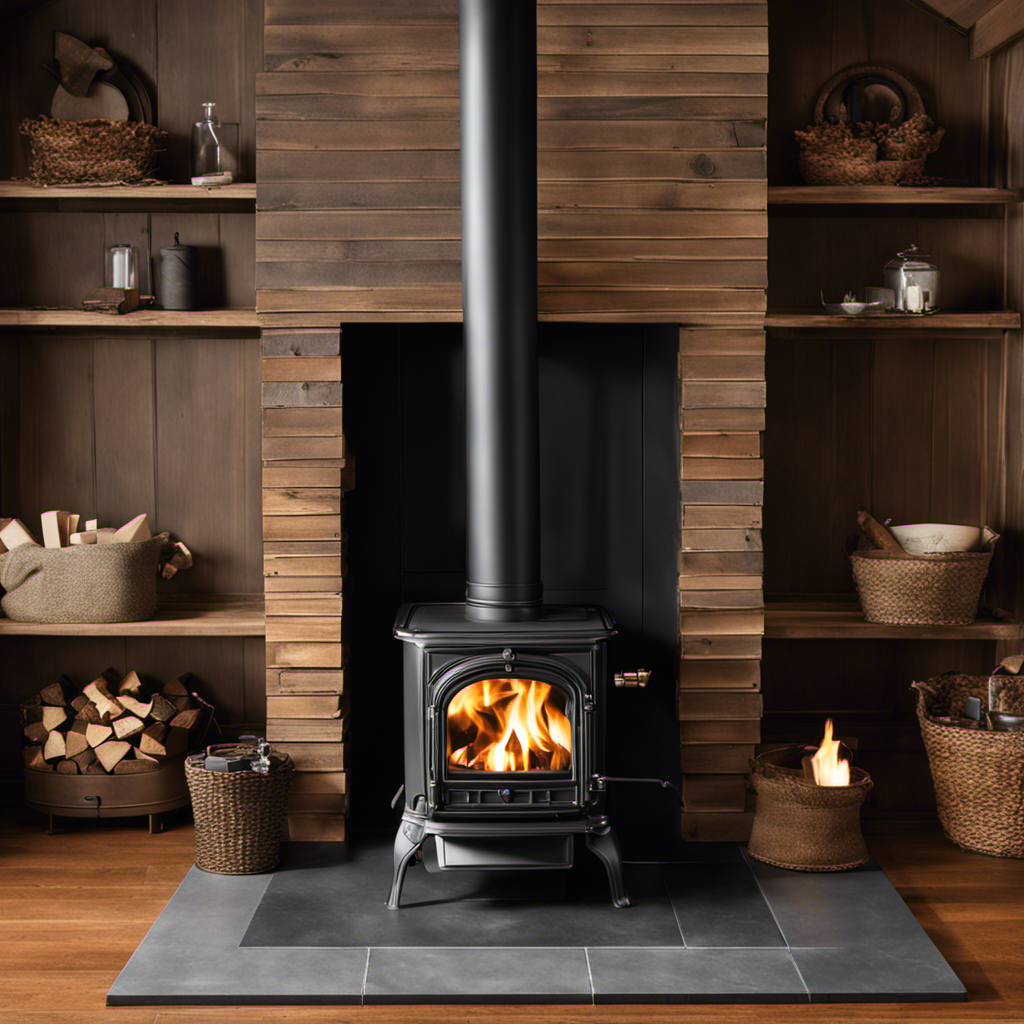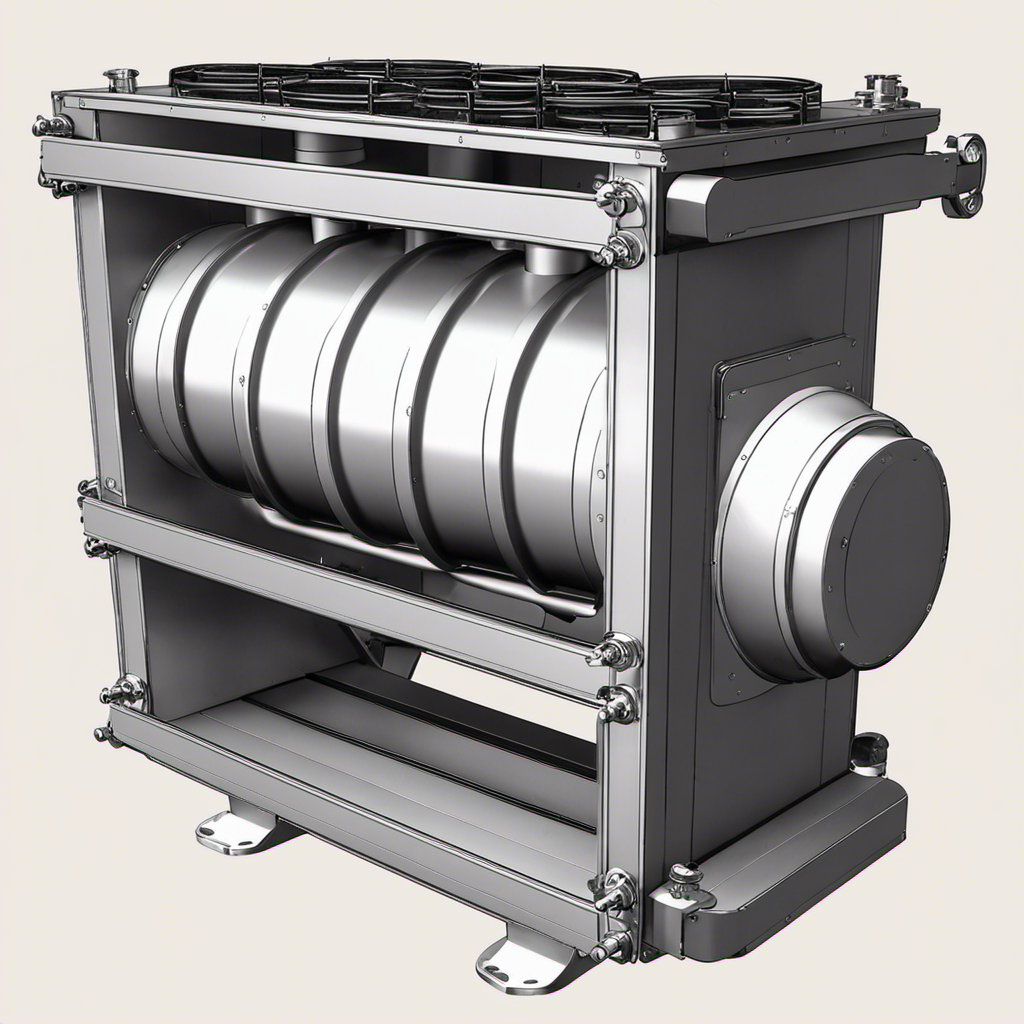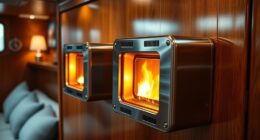I frequently receive the question, ‘What size wood stove should I buy?’
Let me paint a picture for you: imagine cozy winter nights, with the crackling sound of logs and the comforting warmth filling your home.
To achieve this, it’s crucial to choose the right size wood stove. Factors like heating capacity, room size, insulation, and even your location all play a role.
In this article, I’ll guide you through the process of finding the perfect wood stove for your needs.
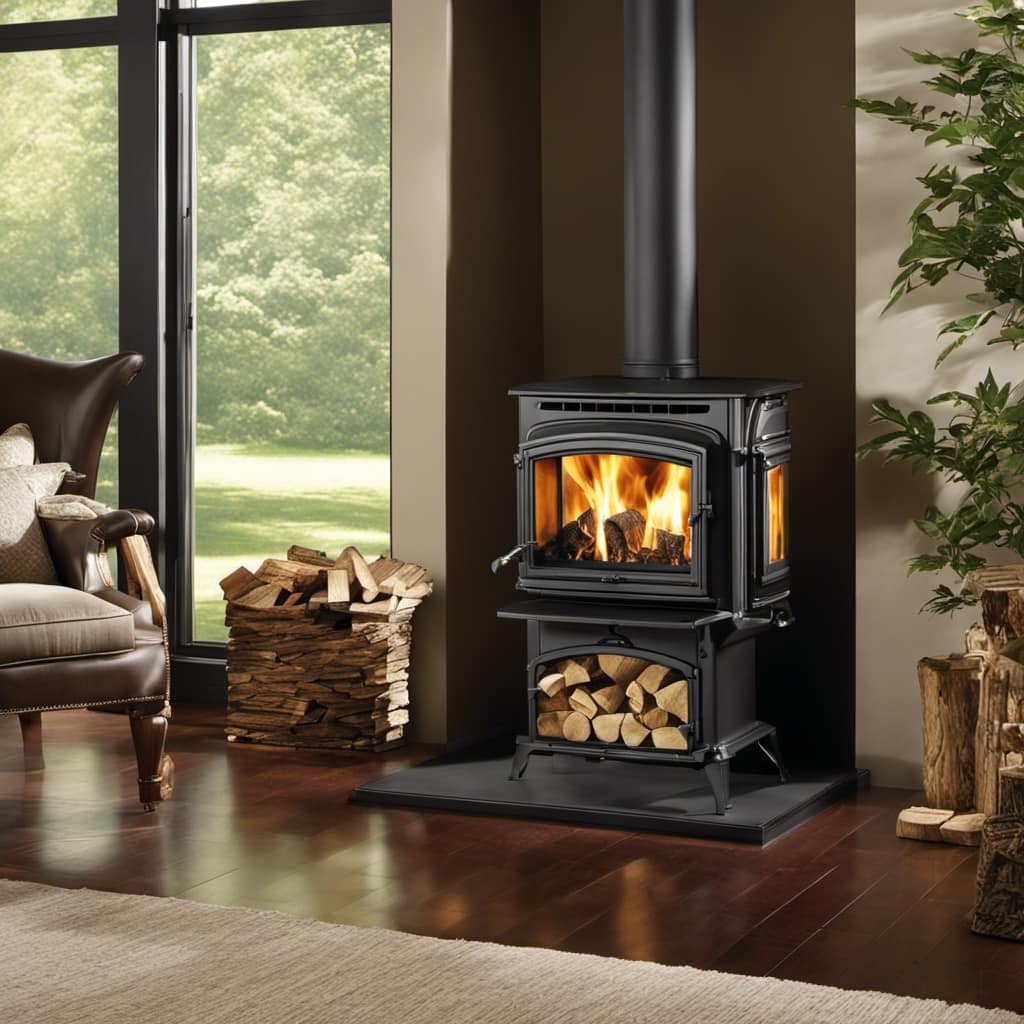
Key Takeaways
- Size of the area, insulation, climate, and layout of the space should be considered when determining the size of a wood stove.
- Heating capacity measured in BTUs should be calculated based on the heating requirements of the space, insulation, and climate.
- The dimensions of the stove should be suitable for the room size and obstacles/furniture should be taken into account for optimal placement.
- Heat distribution should be even throughout the room, and choosing a wood stove with high heating efficiency and advanced combustion technology is recommended.
Factors to Consider
When considering what size wood stove I need, there are several factors to take into account.
It’s important to avoid common mistakes that can lead to an inefficient or inadequate heating system.
One factor to consider is the size of the area you want to heat. A stove that’s too small may not provide enough heat, while a stove that’s too big may produce excessive heat and waste fuel.
Another factor is the insulation of your space. Poor insulation can result in heat loss, requiring a larger stove to compensate.
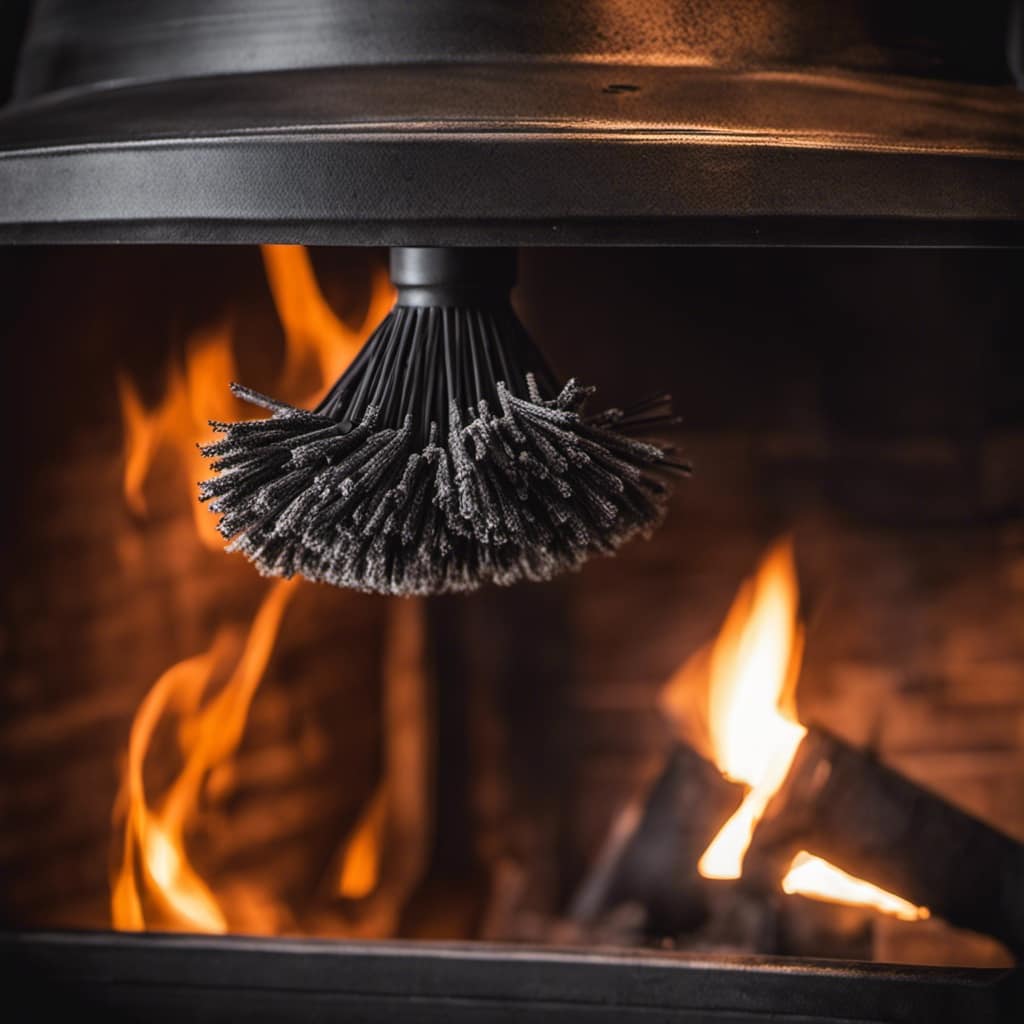
Additionally, you should consider the climate in your region. Colder climates may require a larger stove to effectively heat your home.
Other factors to consider include the layout of your space, the type of fuel you plan to use, and any local regulations or restrictions.
Heating Capacity
I’m considering the heating capacity of the stove. When choosing a wood stove, it’s important to understand its heating efficiency and fuel consumption. The heating capacity refers to the amount of heat the stove can produce, measured in British Thermal Units (BTUs). To determine the appropriate size of the stove, you need to calculate the heating requirements of your space.
First, you need to measure the area you want to heat. Multiply the length, width, and height of the room to get the cubic footage. Then, consider the insulation of your space and the climate in your area. Insulated spaces and colder climates may require a higher heating capacity.
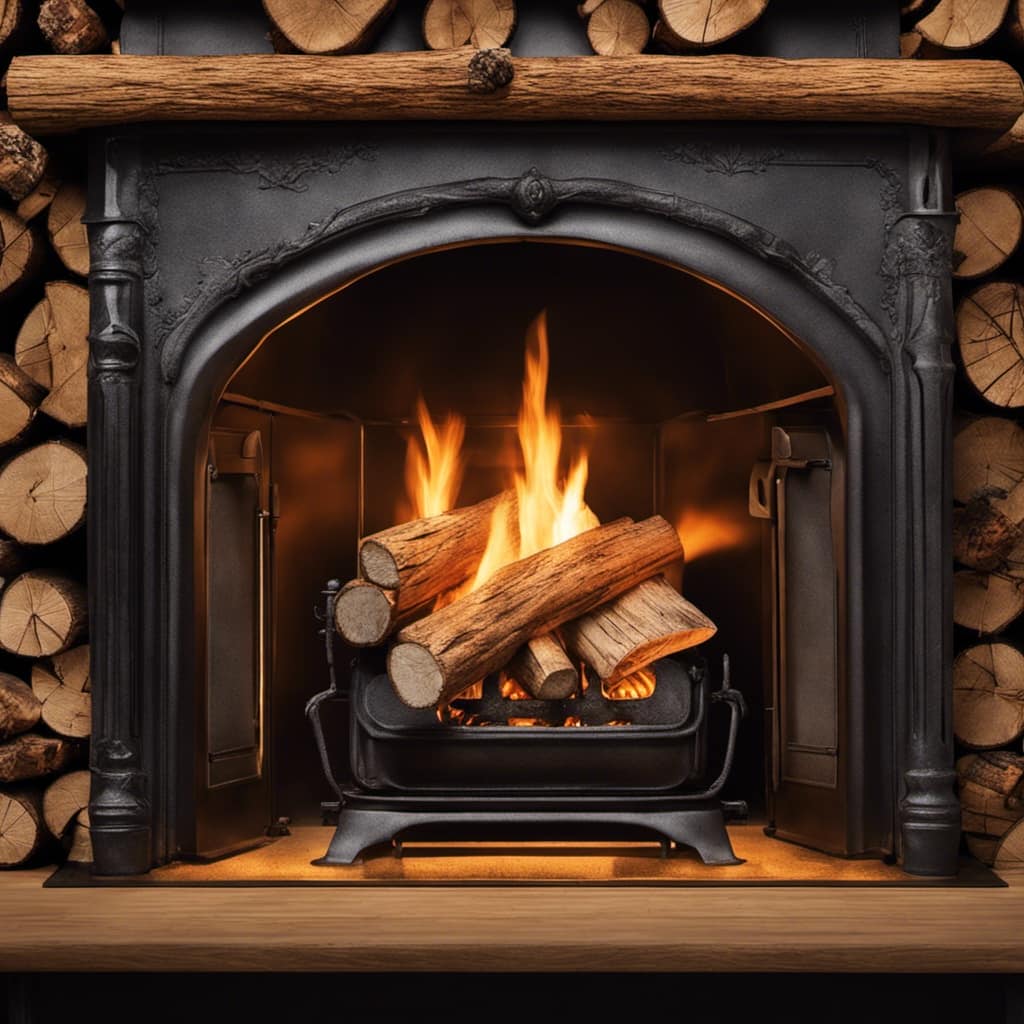
Next, you should evaluate the heating efficiency and fuel consumption of the stove. Heating efficiency is measured as a percentage and indicates how much of the fuel’s heat the stove can convert into usable heat. A higher efficiency means the stove will provide more heat using less fuel. Fuel consumption refers to the amount of wood the stove requires to generate a specific amount of heat.
Room Size and Layout
When considering the size and layout of a room for a wood stove, it’s important to take into account the optimal stove dimensions and heat distribution considerations.
The dimensions of the stove should be suitable for the size of the room, ensuring that it can effectively heat the space without overpowering it.
Additionally, the layout of the room should be considered to ensure that the heat is evenly distributed throughout the space, maximizing comfort and efficiency.
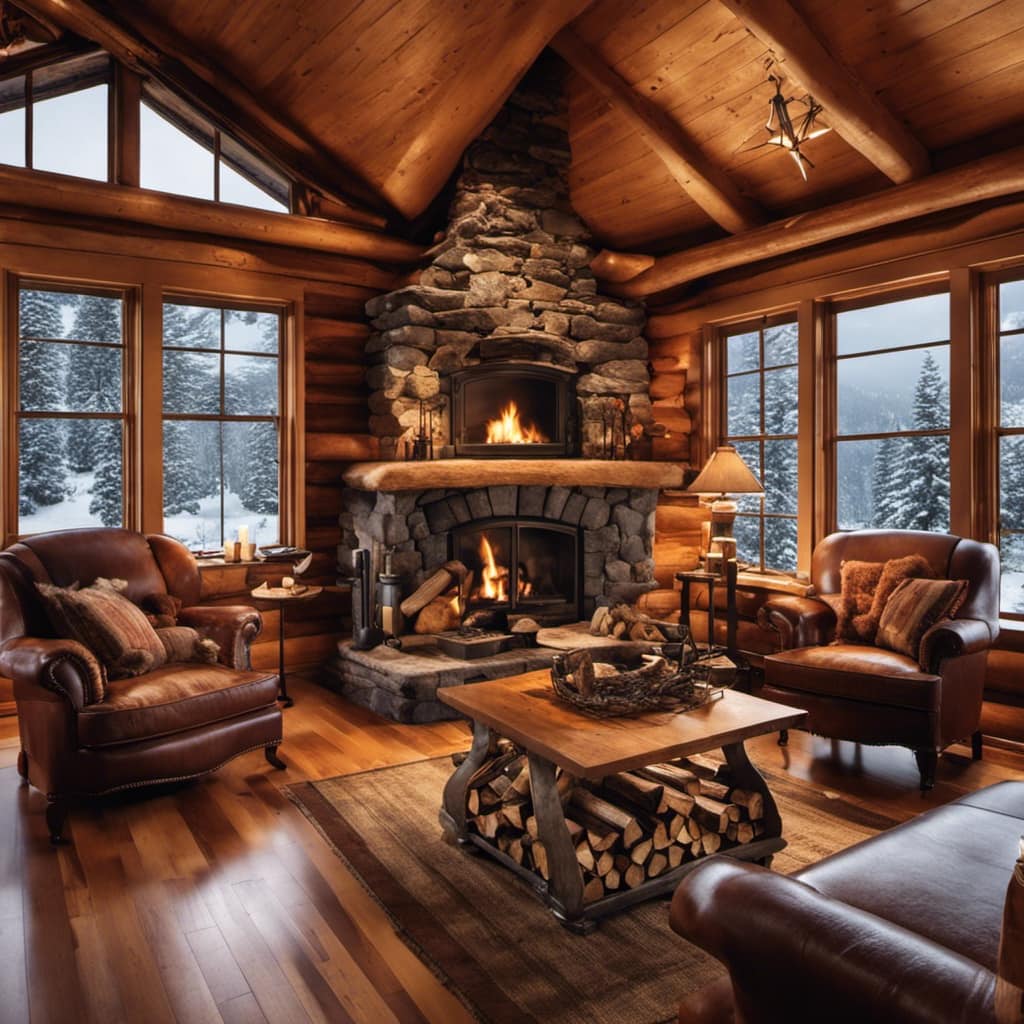
Optimal Stove Dimensions
To determine the optimal stove dimensions, I need to consider the size of my living space and the heating requirements.
The stove size should be proportionate to the space available in the room. A stove that’s too large may overwhelm a small room, while a stove that’s too small may not provide enough heat for a larger space. It’s important to measure the dimensions of the room and take into account any obstacles or furniture that may affect the placement of the stove.
Additionally, the heating requirements of the room should be considered. This includes factors such as insulation, climate, and personal preference.
Heat Distribution Considerations
Considering the layout of my living space and the location of windows and doors, it’s important to ensure that heat from the stove is distributed evenly throughout the room. To achieve this, it’s crucial to consider the heating efficiency and combustion technology of the wood stove.
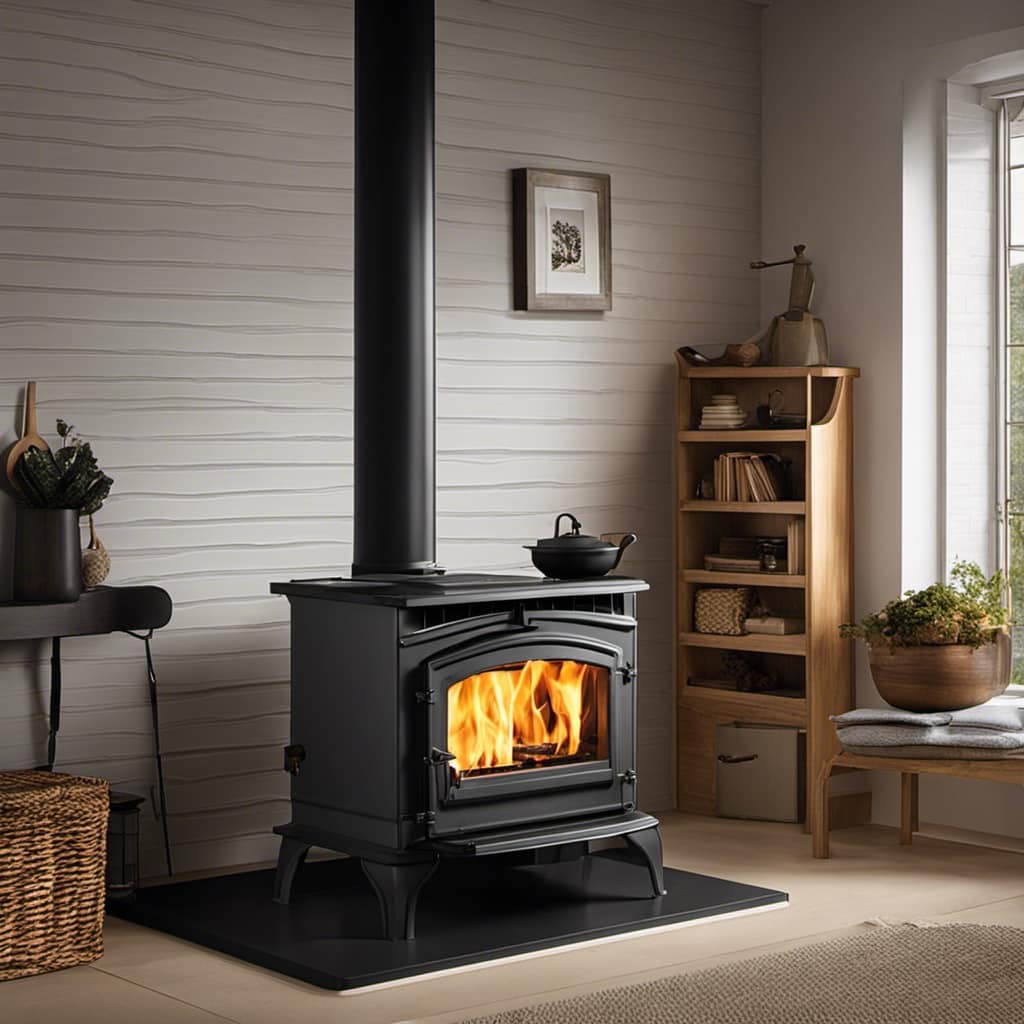
Heating efficiency refers to how effectively the stove converts wood into heat. High efficiency stoves are designed to maximize heat output while minimizing fuel consumption. Combustion technology plays a significant role in heat distribution as well. Advanced combustion systems allow for more complete burning of wood, resulting in increased heat production and reduced emissions.
By choosing a wood stove that prioritizes heating efficiency and utilizes advanced combustion technology, I can ensure that the heat is evenly distributed throughout the room, providing maximum comfort and warmth.
Transitioning into the subsequent section about insulation and energy efficiency, it’s also important to consider how well the room is insulated to further enhance heating efficiency.
Insulation and Energy Efficiency
I’m looking for a wood stove that will maximize the insulation and energy efficiency of my home. When it comes to choosing the right wood stove, there are a few key factors to consider. Here are three important things to keep in mind:
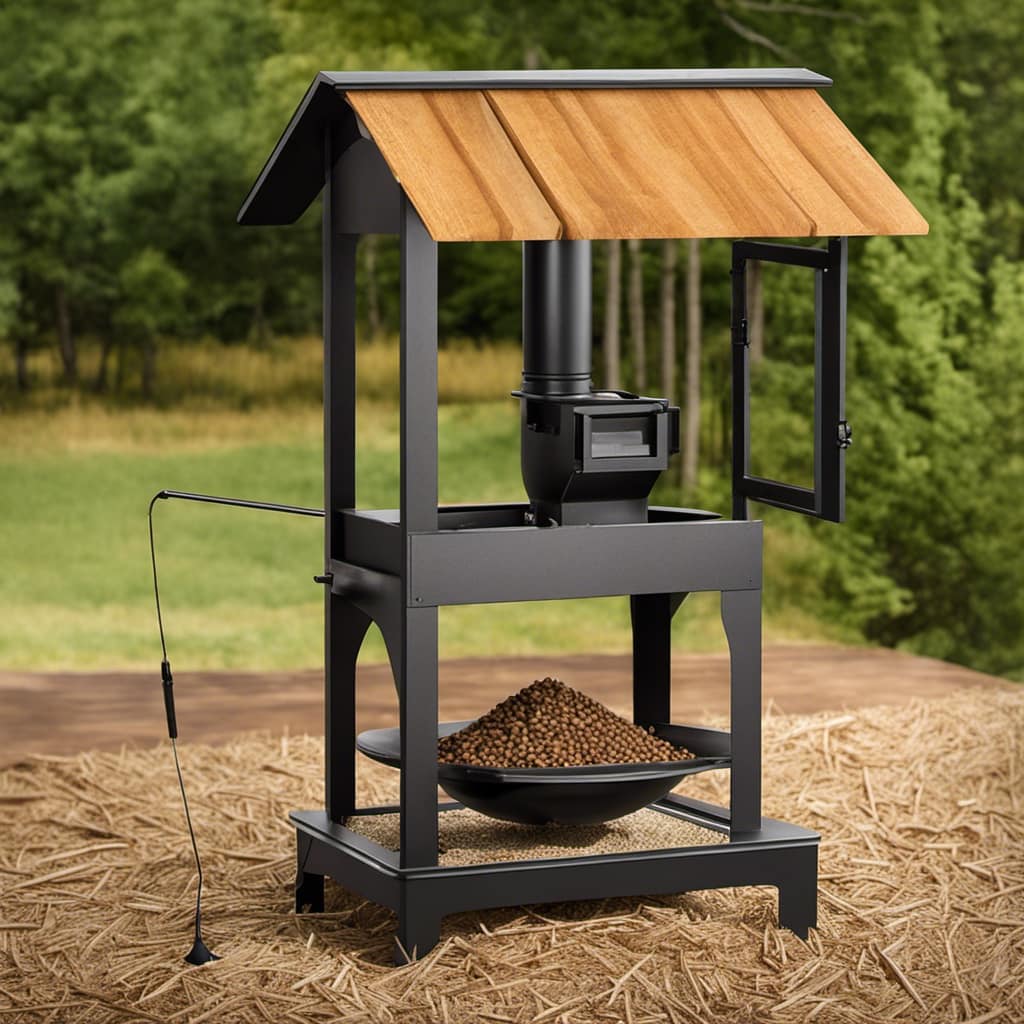
-
Insulation options: Look for a wood stove that has a high insulation rating. This will ensure that the heat generated by the stove stays inside your home, rather than escaping through the walls or chimney. Insulation options can vary, but some popular choices include firebrick lining, ceramic fiber insulation, and refractory cement.
-
Energy efficient designs: Consider a wood stove that’s designed to maximize energy efficiency. Look for features such as a secondary combustion system, which helps to burn off any remaining gases and particles, reducing emissions and increasing heat output. Additionally, look for stoves with airwash systems that keep the glass clean, allowing you to enjoy the view of the fire without sacrificing efficiency.
-
Tight seals: Pay attention to the seals on the stove’s doors and vents. A tight seal is crucial for preventing air leakage and ensuring maximum heat retention. Look for stoves with gaskets or seals that are made from high-quality materials and are resistant to wear and tear.
By considering these factors, you can find a wood stove that won’t only provide warmth and comfort but also help to maximize the insulation and energy efficiency of your home.
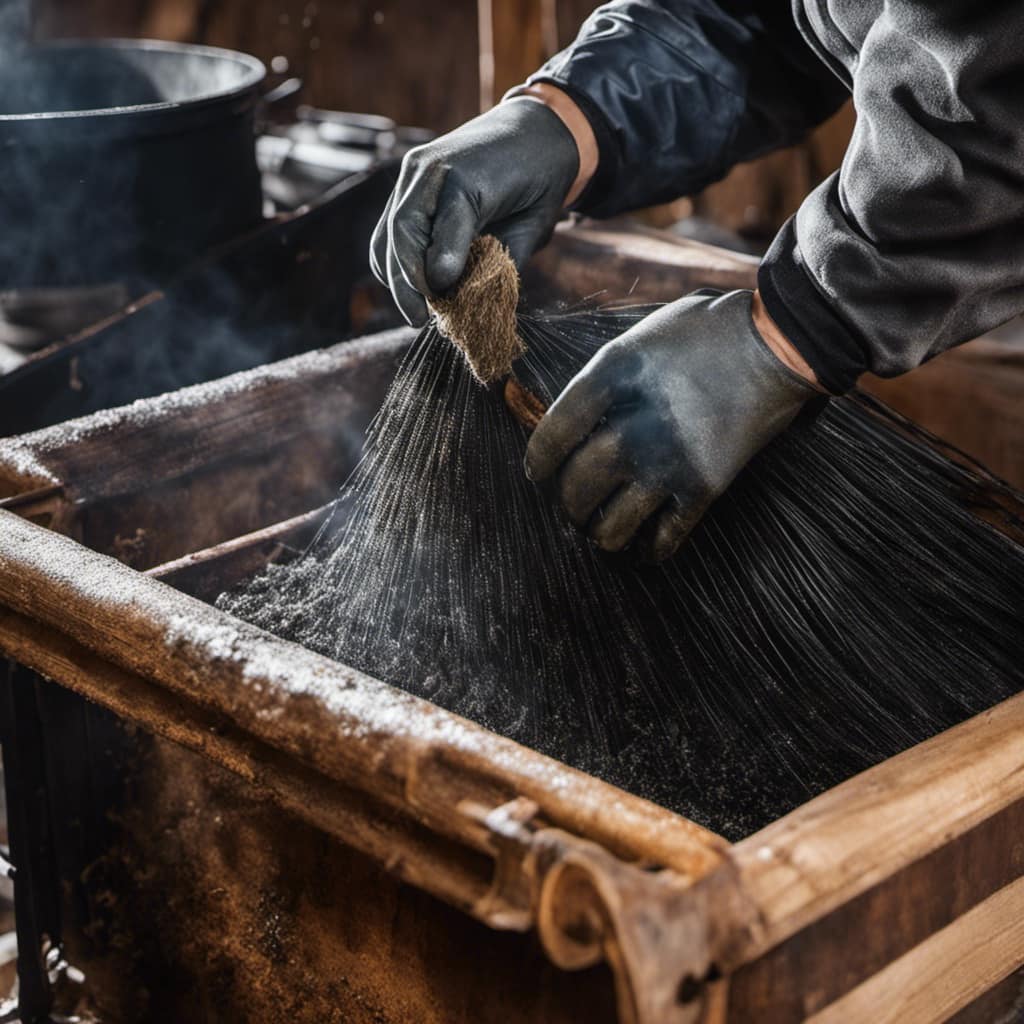
Now, let’s dive into the next section, where we’ll discuss how climate and location play a role in determining the size of the wood stove you need.
Climate and Location
Climate and location play a crucial role in determining the performance and efficiency of a wood stove. As someone considering the size of their wood stove, it’s important to understand how elevation can affect the stove’s combustion process and heat output.
Additionally, being aware of the local weather patterns and fuel availability can help ensure that you choose a wood stove that suits your specific needs and conditions.
Elevation and Performance
At higher elevations, wood stoves perform differently. The impact of elevation on stove efficiency is an important factor to consider when choosing the right wood stove for your location. Here are three key points to keep in mind:
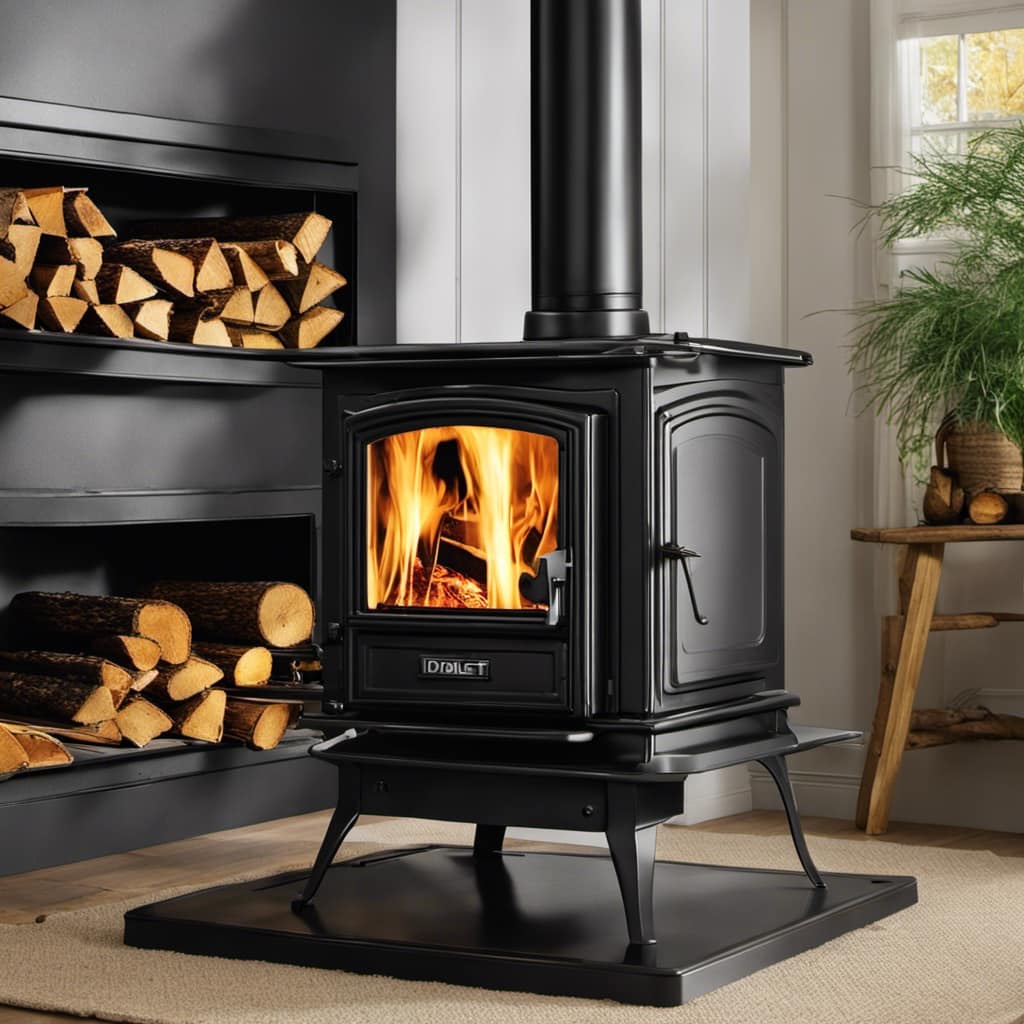
-
Combustion Efficiency: At higher elevations, the air is thinner, which affects the combustion process. Wood stoves may require adjustments to the air intake and damper settings to ensure optimal burning and heat output.
-
Oxygen Availability: Due to the reduced oxygen levels at higher elevations, wood stoves may struggle to maintain a steady flame. This can result in decreased efficiency and heat output. A properly sized wood stove can help compensate for this issue.
-
Heat Distribution: The lower atmospheric pressure at higher elevations affects the movement of heated air. A well-designed wood stove can help maximize heat distribution throughout your living space, ensuring even warmth and comfort.
Understanding the impact of elevation on stove performance is crucial for selecting the right wood stove that will efficiently heat your home at any altitude.
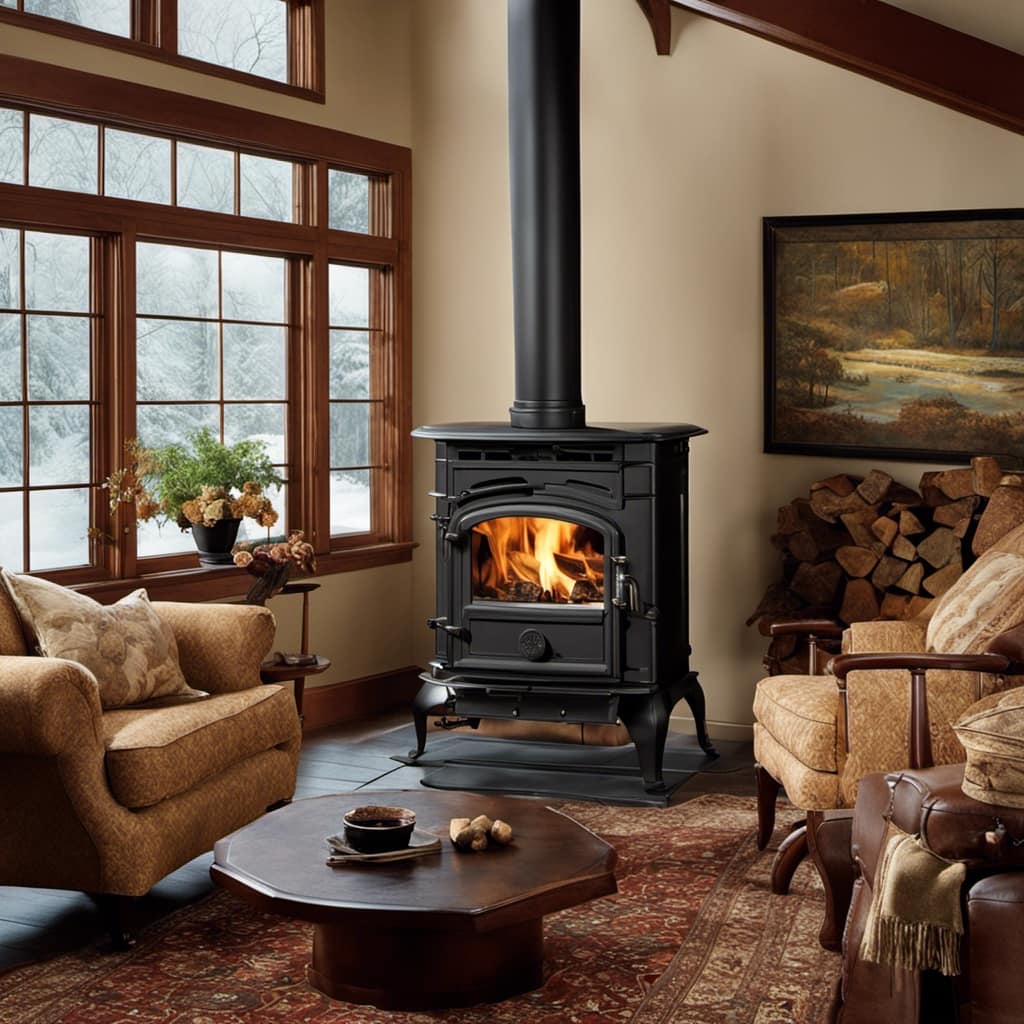
Weather and Fuel Availability
Living in an area with unpredictable weather, I’ve had to be resourceful and find alternative fuel sources for my wood stove. During the winter months, when temperatures drop and it’s crucial to keep my home warm, I rely on the quality of my fuel to ensure efficient heating.
The winter temperatures can fluctuate greatly, and having a reliable and consistent source of fuel is essential. I make sure to choose high-quality firewood that’s properly seasoned to maximize heat output and minimize creosote buildup in my chimney.
Additionally, I consider the moisture content of the wood, as wet or green wood can reduce the efficiency and heat output of my wood stove. By being mindful of fuel quality and understanding how it impacts the performance of my wood stove, I can ensure a warm and comfortable home during the cold winter months.
Clearance and Safety Regulations
I’m concerned about the clearance and safety regulations for my wood stove. When installing a wood stove, it’s crucial to adhere to clearance regulations and safety guidelines to ensure the proper functioning and safety of the stove.
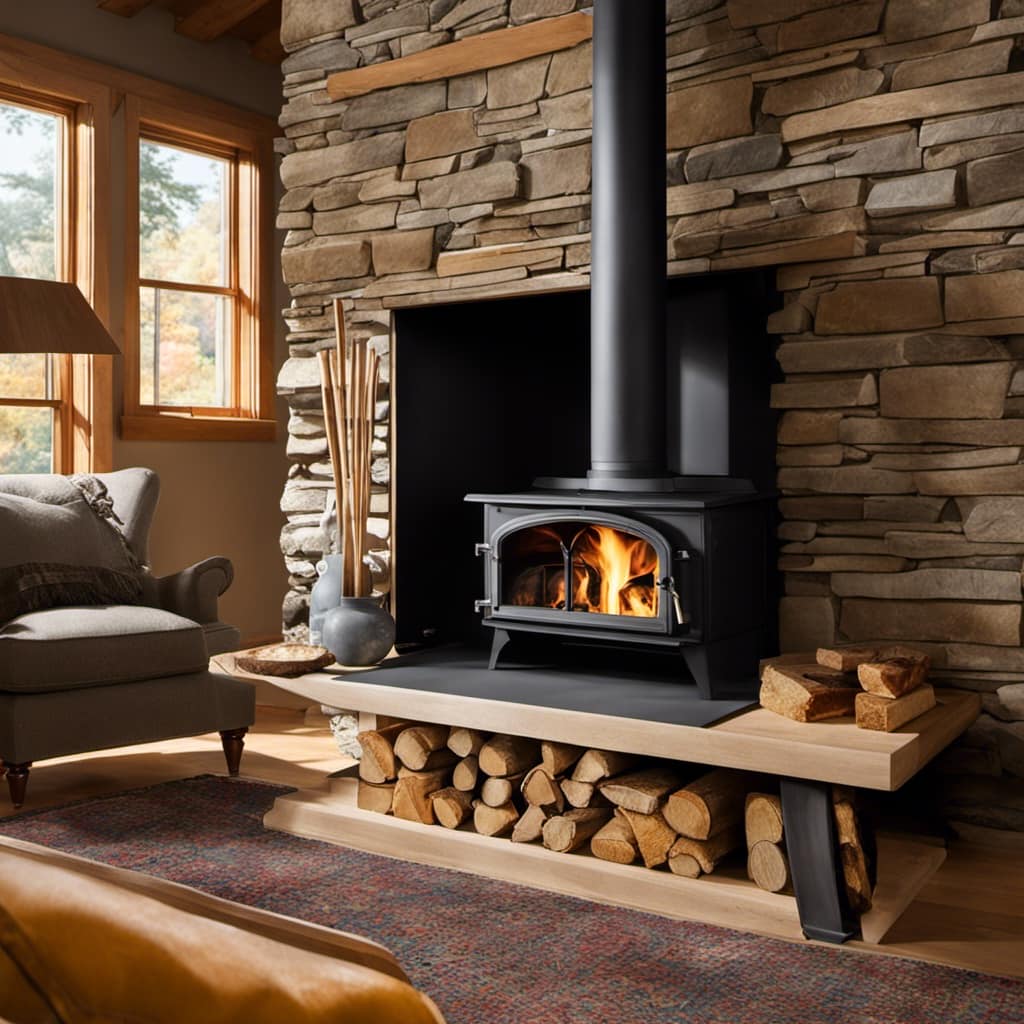
Here are three important points to consider:
-
Clearance Regulations: It’s essential to maintain the required clearance distances between the wood stove and combustible materials. This helps prevent the risk of fire and ensures proper ventilation. The specific clearance distances may vary depending on the type and model of the wood stove, so it’s crucial to consult the manufacturer’s recommendations or local building codes.
-
Safety Guidelines: Proper installation of a wood stove includes ensuring a non-combustible floor and surrounding area, such as using fire-resistant materials like ceramic tiles or fireproof bricks. Additionally, it’s important to have a professional chimney inspection and cleaning regularly to prevent chimney fires and maintain proper airflow.
-
Carbon Monoxide Safety: Wood stoves produce carbon monoxide, a colorless and odorless gas that can be harmful or even deadly if not properly ventilated. It’s crucial to have a functioning and adequately sized chimney or flue system to exhaust the fumes safely. Installing carbon monoxide detectors near the wood stove and throughout your home is also highly recommended for early detection of any potential carbon monoxide leaks.
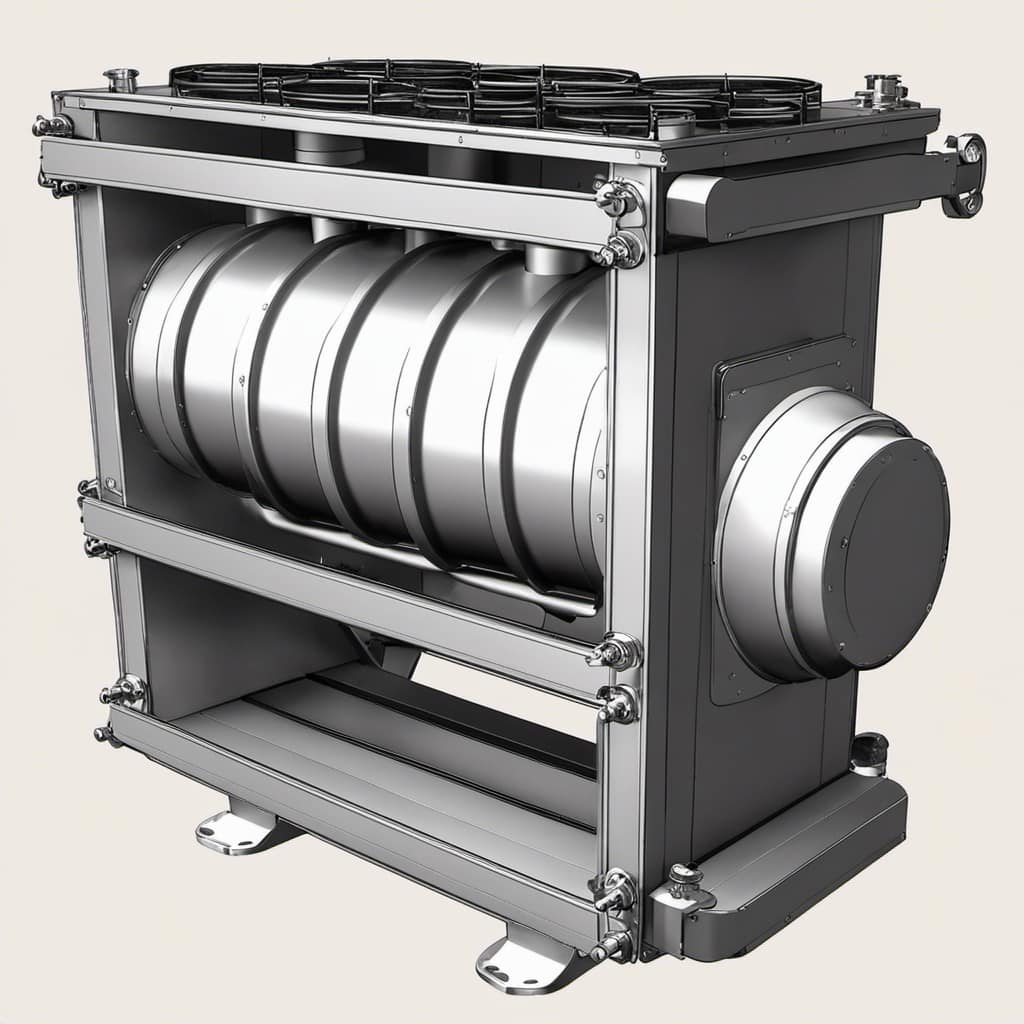
Wood Stove Types and Styles
When it comes to wood stove types and styles, there are several options to choose from. Each type has its own installation and maintenance requirements. It’s important to consider these factors before making a decision.
One common type is the freestanding wood stove. This type is versatile and can be placed anywhere in the room, as long as proper clearance is maintained.
Another type is the fireplace insert, which is designed to fit into an existing fireplace. This option requires professional installation to ensure proper fit and safety.
In terms of maintenance, regular cleaning is crucial to keep your wood stove in good working condition. This involves removing ashes, cleaning the flue, and inspecting the firebox for any signs of damage. It’s also important to have your chimney inspected and cleaned annually to prevent creosote buildup and potential fire hazards.
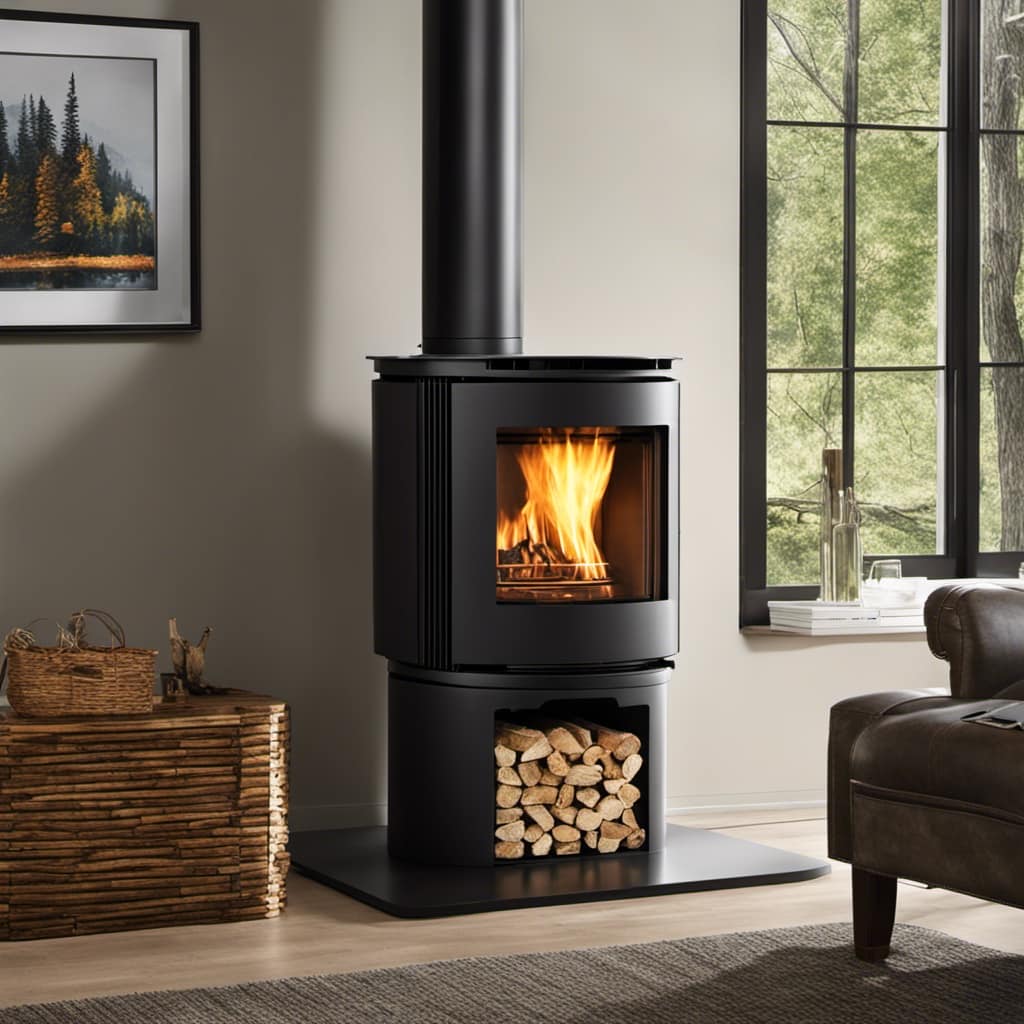
Transition: Now that we know about the different types and maintenance requirements of wood stoves, let’s explore some additional features and accessories that can enhance their functionality and efficiency.
Additional Features and Accessories
As an owner of a wood stove, I find that using a heat-powered fan greatly improves the circulation of warm air throughout the room. Not only does it help distribute heat more evenly, but it also increases the overall efficiency of the wood stove.
Here are three important factors to consider when it comes to wood stove maintenance and choosing the right chimney:
-
Regular cleaning and maintenance: It’s essential to regularly clean your wood stove to ensure its optimal performance. This includes removing ashes and soot buildup, as well as inspecting and replacing any worn-out parts. A well-maintained wood stove won’t only operate more efficiently but also last longer.
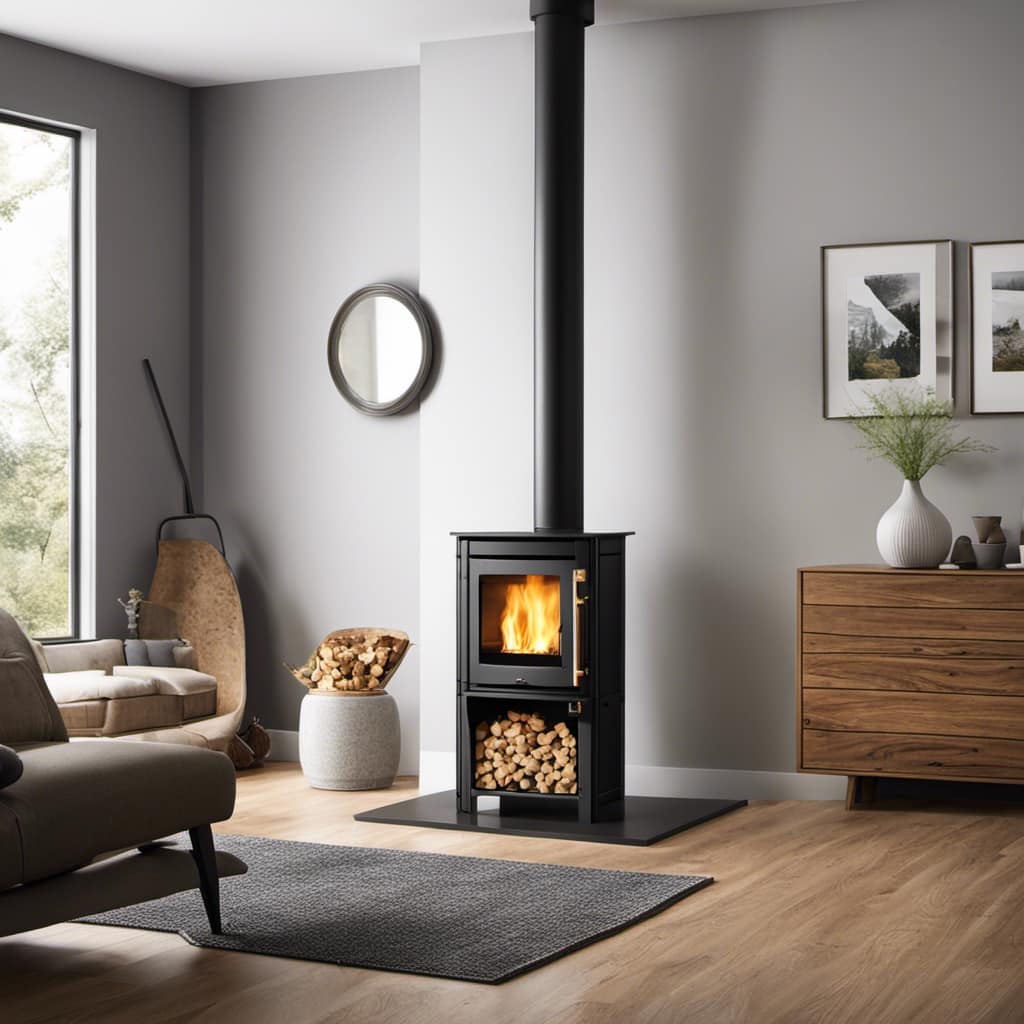
-
Choosing the right chimney: The chimney plays a crucial role in the safe and efficient operation of a wood stove. It’s important to choose a chimney that’s compatible with your wood stove and meets local building codes and regulations. Consider factors such as the chimney’s height, diameter, and insulation to ensure proper draft and minimize the risk of creosote buildup.
-
Inspecting and maintaining chimney liners: Chimney liners protect the chimney walls from excessive heat and help improve the draft. Inspecting and maintaining chimney liners regularly is essential to ensure their integrity and prevent any potential hazards.
Frequently Asked Questions
Can I Use a Wood Stove in a Mobile Home?
Yes, you can use a wood stove in a mobile home, but it’s essential to prioritize mobile home safety and follow proper wood stove installation guidelines.
Mobile homes have specific requirements for wood stove installation to ensure safe operation. It’s crucial to consult with a professional to determine the appropriate size and type of wood stove for your mobile home.
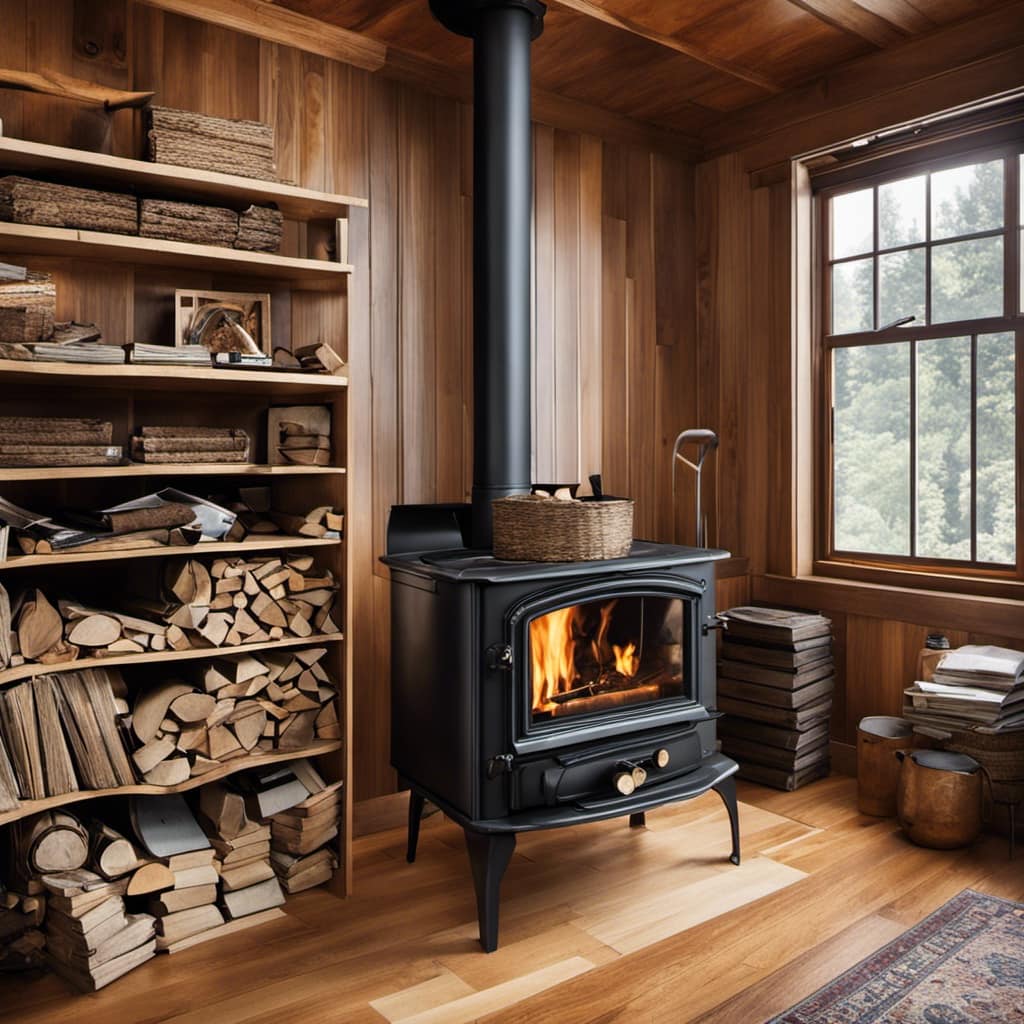
How Often Should I Clean the Chimney of My Wood Stove?
Maintaining a wood stove chimney is crucial for optimal performance, so let’s dive into it.
Regular chimney cleaning is necessary to prevent dangerous buildup and potential chimney fires. Signs that indicate it’s time for a cleaning include a strong odor, smoke backing up into the room, or a decrease in stove efficiency.
To ensure safety and efficiency, it’s recommended to have a professional inspect and clean your chimney at least once a year.
Don’t neglect this essential maintenance task!
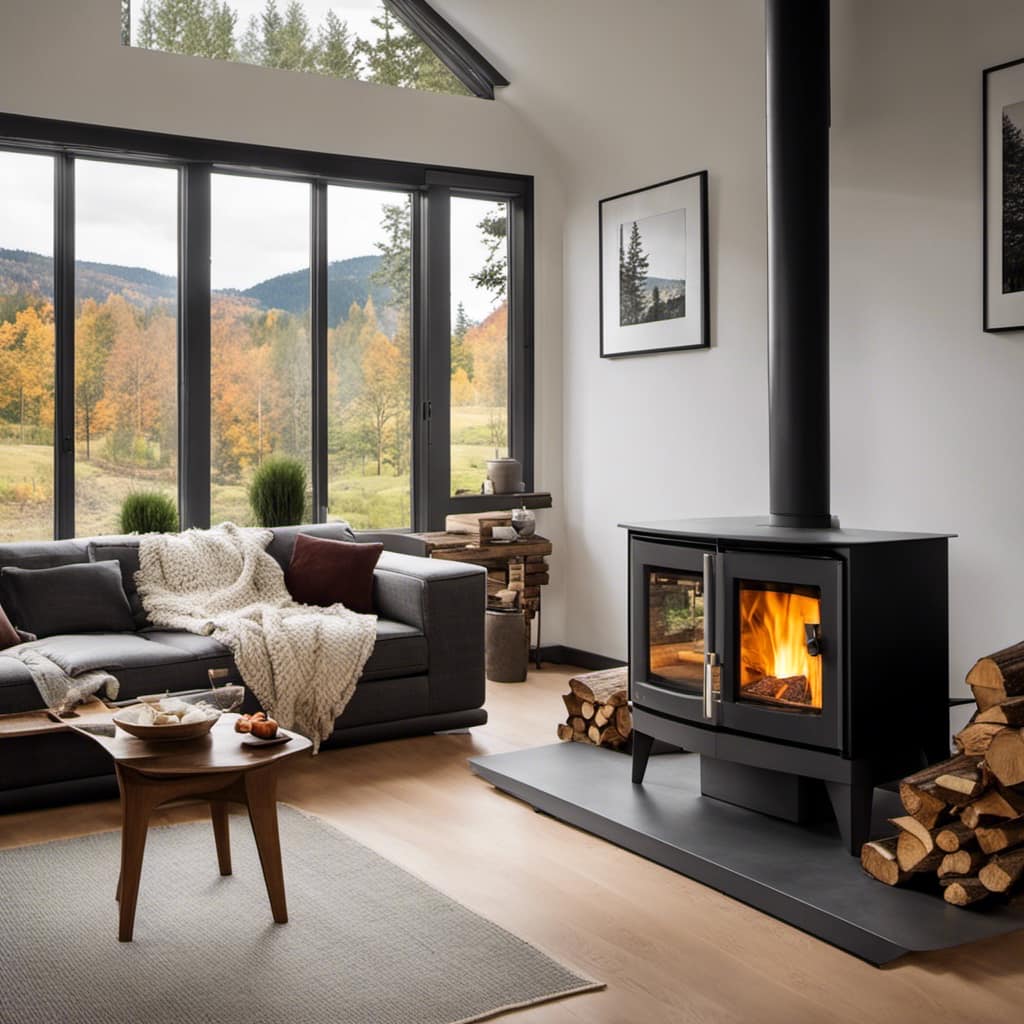
Are Wood Stoves Safe to Use if I Have Young Children or Pets?
Wood stoves can be safe to use if you have young children or pets, but it’s important to take some precautions.
Childproofing your wood stove area is crucial to prevent accidents. Install a safety gate or barrier to keep children and pets away from the stove. Also, make sure to teach your kids about the dangers of the stove and establish clear boundaries.
Regular maintenance, such as cleaning and proper ventilation, is essential for wood stove pet safety as well.
Can I Use a Wood Stove as My Primary Heating Source?
Yes, you can use a wood stove as your primary heating source.
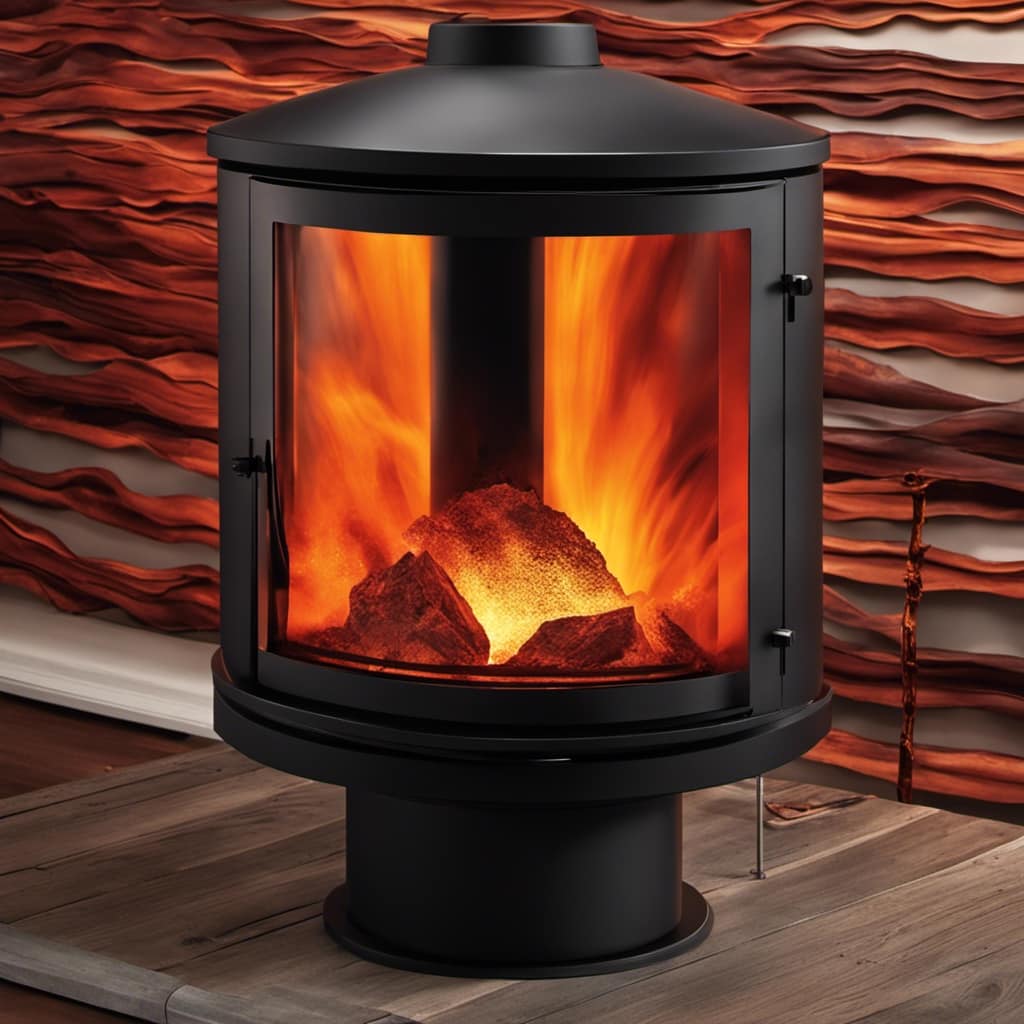
Wood stoves are efficient for heating a whole house, providing warmth and comfort. They can effectively heat large spaces and maintain a cozy temperature throughout the day.
However, it’s important to consider the size of your house and the stove’s heating capacity to ensure proper heating distribution.
Regular maintenance and proper installation are also essential for safe and efficient use.
Are There Any Government Incentives or Subsidies Available for Purchasing a Wood Stove?
As someone considering a wood stove, I wondered if there were any government incentives or subsidies available.
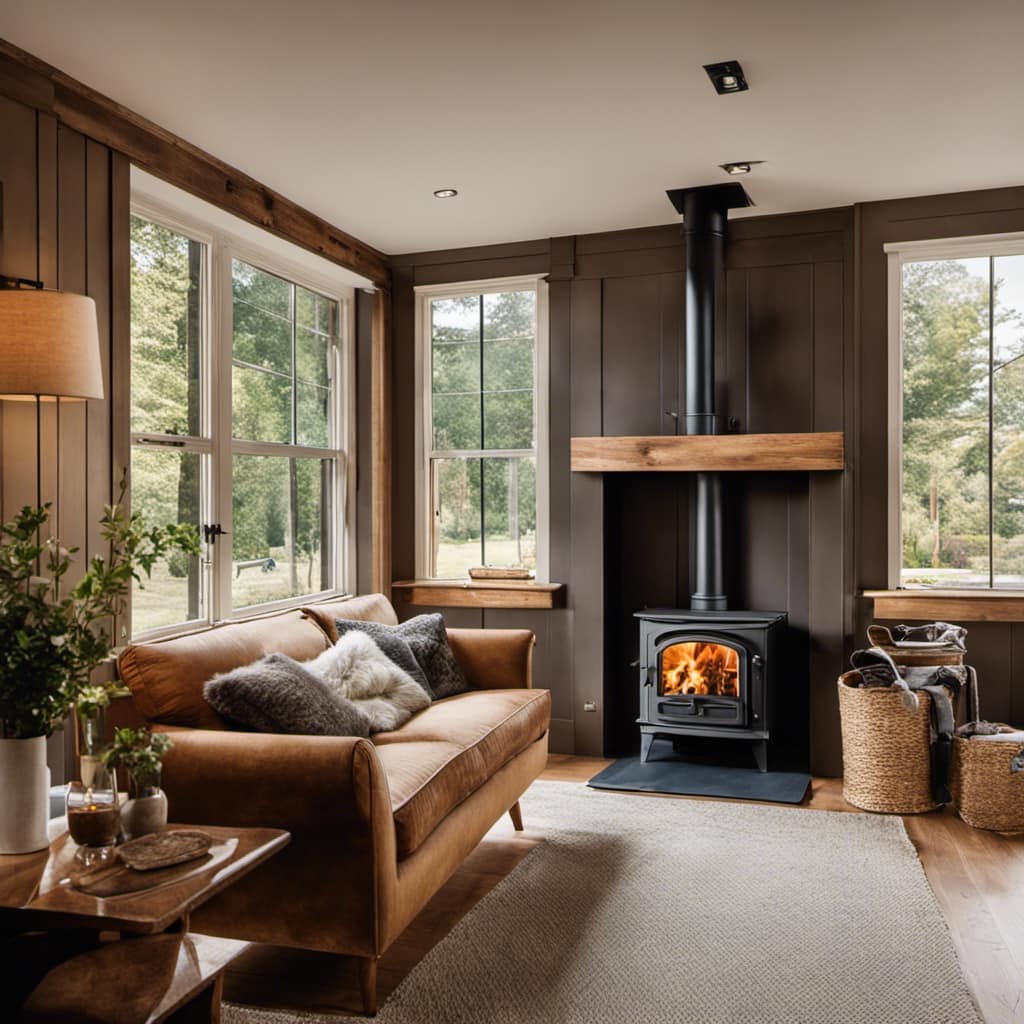
It turns out, there are! Many governments offer programs to encourage the use of wood stoves, such as tax credits or grants.
These incentives aim to promote the adoption of wood stoves as a primary heating source, while also addressing concerns about government regulations and environmental impact.
It’s great to see the government supporting environmentally friendly heating options.
Conclusion
In conclusion, choosing the right size wood stove is crucial for efficient and effective heating. Factors such as heating capacity, room size, insulation, climate, and safety regulations should be carefully considered.
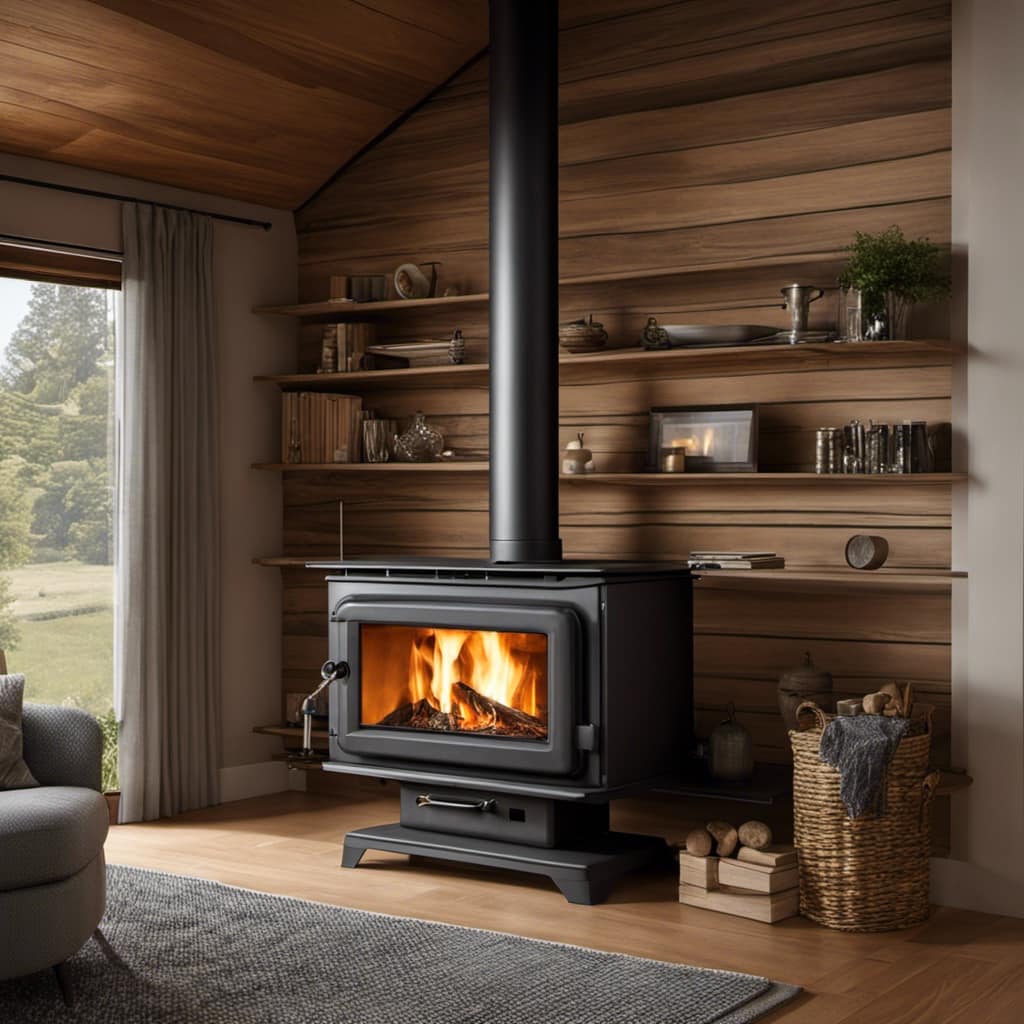
It’s important to find a balance between size and performance to ensure optimal heat distribution.
Just like a well-fitted puzzle piece completes the picture, a properly sized wood stove will bring warmth and comfort to your home.
Growing up surrounded by the vast beauty of nature, Sierra was always drawn to the call of the wild. While others sought the comfort of the familiar, she ventured out, embracing the unpredictable and finding stories in the heartbeat of nature.
At the epicenter of every remarkable venture lies a dynamic team—a fusion of diverse talents, visions, and passions. The essence of Best Small Wood Stoves is crafted and refined by such a trio: Sierra, Logan, and Terra. Their collective expertise has transformed the platform into a leading authority on small wood stoves, radiating warmth and knowledge in equal measure.




